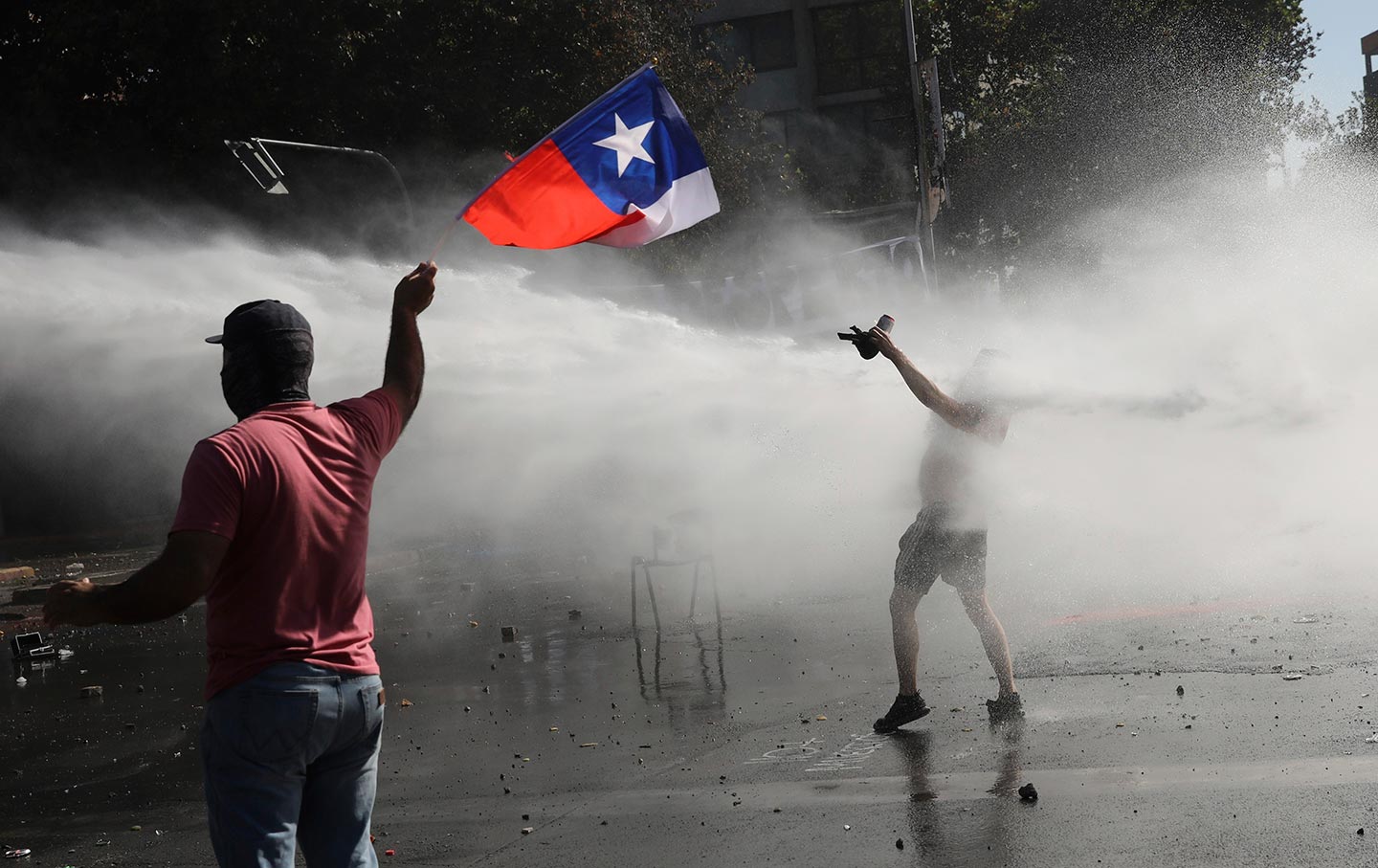
Santiago, Chile—I woke up early on October 20 after the city’s first night with a curfew since 1987. When I stepped outside, no one was in the streets, and the remains of a crude barricade and a traffic light lay piled near my apartment. A couple of blocks away, a pharmacy had been looted and the burnt husks of six buses sat in the middle of the road. When a tank with a soldier peeping out from the hatch passed in front of me, I almost cried.
For someone who grew up during a military dictatorship, the idea of the Army patrolling the city is terrifying and heartbreaking. That Sunday morning, as I walked through my neighborhood, I wondered: What was wrong in Chile?
I stopped at Plaza Italia, the heart of Santiago, where every big demonstration takes place. A group of students was there, hanging a sheet with a scrawled message: Por Una Vida Digna, No Más Negocios Con Nuestras Vidas—“For a dignified life, no more business with our lives.” To me, that sentence summarizes the protesters’ demands.










